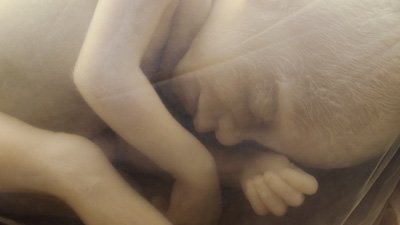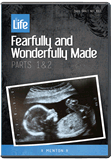Flesh and Blood
If the life of the flesh is in the blood, why do we say life begins before there is blood? And what about twins?
If the life of the flesh is in the blood, why do we say life begins before there is blood? And what about twins?
There’s been a lot of talk over when life begins and abortion, and there are still a few things standing in my way, both Biblical and scientific, as to life beginning at conception. The first one is Leviticus 17:11 where it says the life of the flesh is in the blood, and in the early stages of development there’s no blood. The other is the twinning process. Twins come from the same egg. I know twins, and if it all starts at conception wouldn’t that mean that they are both the same person and share one soul? Thanks for your help, I appreciate the ministry.
J., St. Thomas, Ontario
Thank you for raising these issues. Many people have the same questions. The answers are foundational to ethical issues facing our society and dilemmas facing individuals. The problem goes beyond the question of what to do with an unwanted pregnancy—earth-shaking as that life-and-death issue is. How we answer these questions affects our stand on issues such as “emergency” contraception, in vitro fertilization, and embryonic stem cell research.
Traditionally, conception has been defined as the moment when the sperm fertilizes the ovum. Because the medical establishment has redefined conception as a synonym for implantation—an event that occurs several days after fertilization—we must now be careful to refer to that event as fertilization. Fertilization is a definite moment in time when the sperm fertilizes the egg, combining their genetic material and producing a zygote possessing a full complement of DNA, the human genome. From that moment, the new human being only has to develop.
A person’s life on earth is a continuum: it has a beginning and an end. Everything in between is a process of growth and development. The apportionment of the tiny being’s undifferentiated cells into the parts that will form his body and his placenta, his progress from embryo to fetus, his development from infancy through puberty to adulthood—all are parts of his life’s continuum.
Reaching certain milestones does not make a developing person more human; milestones simply measure progress. We would not consider a child who has learned to talk more human than one who has not. Likewise, we should not consider a blastocyst that has not yet implanted less human than one that has.
Identical twins are produced when the mass of dividing cells—regardless of its scientific name at that point—splits in two. Prior to about the thirteenth day of development, this process produces two completely separate and distinct individuals who just happen to have identical genomes. They are essentially clones of one another. If the split happens around the thirteenth to the fifteenth day, these individuals will share some body parts and be considered Siamese, or conjoined, twins.
If it all starts at conception wouldn’t that mean they are both the same person and share one soul?
If we try to delay defining the point at which life begins until after the possibility of twinning has occurred, then we’ll have trouble when we try to explain conjoined twins. They never completed the process of separation, so how can they be distinct individuals? After all, the “problem” with defining life before complete separation should consistently still apply. The living example of conjoined twins makes the “after-twinning” modification of the life-begins point ludicrous.
So if life really begins at fertilization—as we contend—then how do we explain the fact that identical twins have individual personalities and separate, distinct souls?
Consider the case of identical twins you have known. They look alike. Their original “hard-wiring” is the same. They may even behave and respond in similar ways. But do they do all things the same? Like all the same things? Think the same thoughts and make the same choices? No. Can one be saved and the other not? Certainly.
There is more to individuality than hard-wiring. The hard-wiring blueprint is set when the zygote with its complete genome is formed. That is sufficient for humanness. The continuum of life goes on. For identical twins, part of their “life continuum” includes that unremembered time when twinning occurred to produce them.
Individual personality doesn’t have to develop before we consider that person a person. The body doesn’t have to finish forming before we consider that person a person. God already considers the unborn a person according to Psalm 139. If twinning occurs, then the two cloned DNA blueprints go their own way and are separate human beings from that point onward.
When twinning happens, a little extra cell division happens and quickly makes up the physical difference. The existence of a full complement of DNA possessing the human blueprint within a fertilized cell is a sufficient condition for humanness. Twinning simply allows two individuals to develop where there was the physical presence of one before. The tendency to twin is heritable, so even the propensity to become two can be part of the initial zygote’s character. In any case, God certainly knows which zygote will twin and can breathe in the spiritual life to each. For us to guess about whether “ensoulment” of both twins happens from the time of fertilization—since God has the foreknowledge to know twinning will occur—or once the split occurs would be mere speculation.
The presence of a new human genome wrapped in the cellular machinery intended to facilitate its development (in other words, the DNA in a zygote or beyond, not the DNA in a stomach cell or a skin cell) is the most reasonable point to start the clock on an individual’s humanity. God also acknowledged the spiritual life of the unborn. All the information to physically “hard-wire” the human is present at fertilization. Therefore, fertilization is the most reasonable time to understand that the human spirit made in the image of God—the quality which separates us from animals, the quality which makes wanton destruction of that life wrong—is present.
You mentioned one other sticking point.
Leviticus 17:11 … says the life of the flesh is in the blood, and in the early stages of development there's no blood.
The earliest blood cells and cardiovascular structures develop during the third week of development. Does this mean that the human being’s life does not begin until blood cells are present? Leviticus 17:11 says, “For the life of the flesh is in the blood, and I have given it to you upon the altar to make atonement for your souls; for it is the blood that makes atonement for the soul.
”
To put Leviticus 17:11 in context, we should examine the surrounding verses. Verses 1–10 explain the rule that, while in the wilderness, the Israelites were to slaughter their animals at the tabernacle to ensure that no one secretly sacrificed to idols. The subsequent verses stipulate that Israelites were to pour out the blood of slaughtered animals instead of eating it. God explains that blood is special and that He wishes them to remember that blood of sacrifices is set apart to be poured on the altar. To eat blood would diminish the sanctity of the blood and demean the symbolic meaning of the sacrifice.
Verse 14 holds the key principle for understanding the phrase, “the life of the flesh is in the blood.
” That verse elaborates by saying “for it
[blood] is the life of all flesh. Its blood sustains its life. Therefore I said to the children of Israel, ‘You shall not eat the blood of any flesh, for the life of all flesh is in its blood.’
” Blood is not alive. Yet beyond a certain size, creatures require some sort of circulatory system to remain alive. Blood transports nutrients and oxygen to the rest of the body. When all the blood leaves a creature, that creature dies because there is no way to sustain its life.
The Bible never actually defines life. But neither does science. We all know that an organism can go from being alive one moment to dead the next. Science and common human experience can describe the characteristics of life, but we have never discovered that intangible quality that makes something alive. The Bible uses the Hebrew word nephesh to refer to “life” and “soul” of humans and animals, but not plants or insects.
Life is a gift from God. Blood sustains life, but blood is not life. Creatures are able to continue living because they have blood, but the blood does not make them alive. Their blood keeps them alive. But if they die from something besides bleeding to death, they are dead even though there is still blood in their bodies. Thus, the presence of blood in the embryo beyond a certain size is necessary to sustain its life—the life it already possesses as a gift from God. And in the case of a human embryo, that gift includes being made in the very image of God.
Summing up, based on Leviticus 17:14 as it explains 17:11, the life of the flesh is in the blood only because “blood sustains
” the flesh’s life. We can therefore understand that from about the third week forward, a human embryo develops blood and a circulatory system in order to sustain the life it already possesses.
At fertilization God bestows the gift of life as surely as He did when He breathed life into Adam. The creation of a genomic blueprint at fertilization marks the defining point at which a human life starts. If twinning occurs, God who provides all life is capable of creating two individual souls and instilling them in the developing children in the womb (Psalm 139:16) when He deems fit. Their DNA will be cloned but they will develop individual personalities because there is more to a person than the blueprint that gets him started. And when about three weeks have passed, that life—or those lives—will begin to produce the blood and circulatory system necessary to sustain them until death. Life begins at fertilization.
Recommended Resources

Answers in Genesis is an apologetics ministry, dedicated to helping Christians defend their faith and proclaim the good news of Jesus Christ.
- Customer Service 800.778.3390
- © 2025 Answers in Genesis






